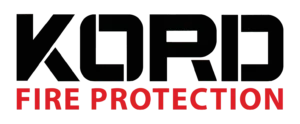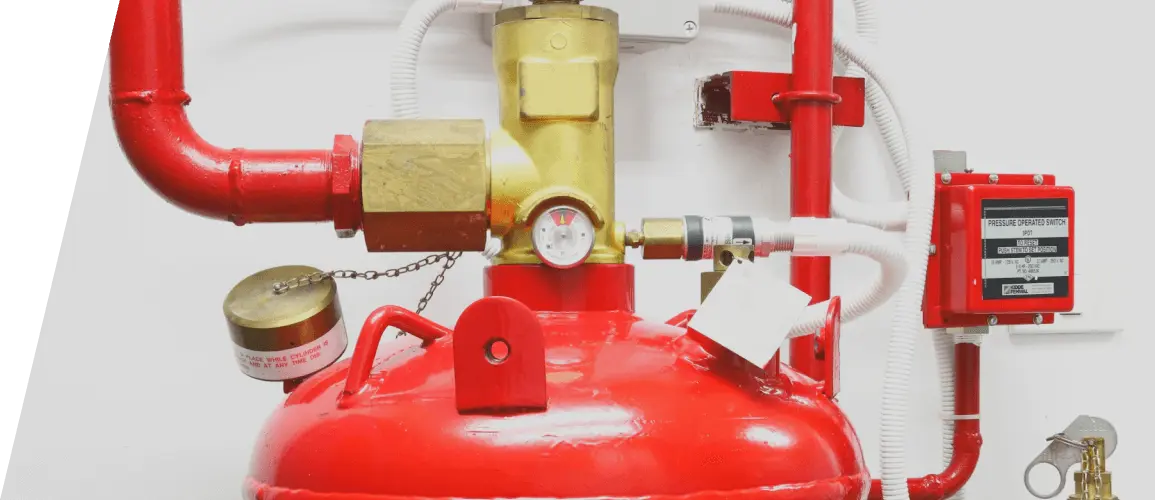Clean Agent Fire Suppression Systems
Clean agent fire suppression systems protect high-value assets in situations where water could cause damage. These systems, such as FM-200, Novec 1230, Inergen, and CO2, use specific gases and chemicals to suppress fire by either displacing oxygen or absorbing heat.
These versatile systems, which leave no residue, are popular in a wide variety of facilities, including, but not limited to, bank vaults, computer rooms, data centers, libraries, server rooms, and telecommunications centers. Clean agent fire suppression systems are designed to fight Class A standard fires, Class B gaseous and liquid fires, and Class C electrical fires, making them a comprehensive solution for fire safety.
Because of their “greener” profile, FM-200 systems are often used to replace Halon systems.

Protect Your Property
Get the latest fire safety tips delivered straight to your inbox.
Installation & Servicing
The NFPA has specific guidelines for clean agent fire suppression, installation, testing, and maintenance. For that reason, these procedures should always be handled by certified professionals. Kord Fire Protection’s reliable and affordable services are in full accordance with NFPA 2001. With decades in fire protection, KORD has the tools, knowledge, and experience to service all your fire system needs.
Clean Agent Suppression Repairs
We understand the urgency of maintaining effective fire protection, so our experienced team responds promptly to address any issues and perform repairs with minimal disruption to your operations. Get your system back in top shape and ensure ongoing fire safety with our dependable repair services.
Clean Agent Fire Suppression Services
Our expert team offers everything from system design and installation to regular maintenance and emergency support. We ensure that your clean agent fire suppression system is always ready to provide effective fire protection and meet all regulatory standards. We provide expert design, installation, and maintenance of clean agent systems to offer effective fire protection for data centers, server rooms, and other critical environments.
Different Types Of Clean Agent Fire Suppression
When it comes to clean agent fire suppression, there is no one-size-fits-all solution. Meaning some systems might be better for specific circumstances than others.
- 01 FM-200 Fire Suppression
- 02 NOVAC-1230 Fire Suppression
- 03 Inergen Fire Suppression
- 04 Halon Fire Suppression
- 05 CO2 Fire Suppression
FM-200 Fire Suppression Systems
FM-200 is a non-toxic, colorless glass that leaves no residue. Its main objective is to suppress fire by absorbing heat and lowering the temperature. While FM-200 has long been a popular option for clean agent fire suppression needs, it is currently being phased down due to environmental concerns. This process began in 2022 and is slated to conclude in 2037.
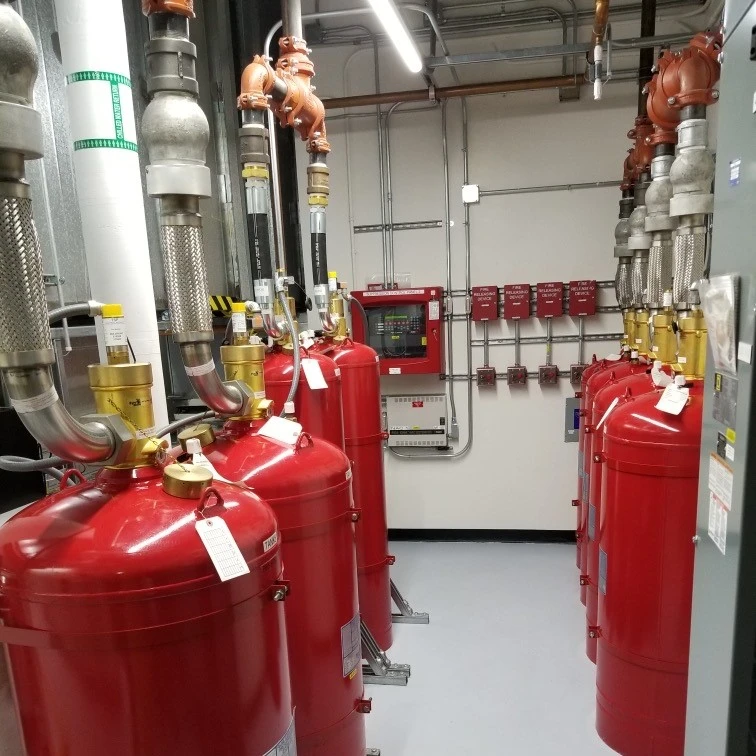
NOVEC-1230 Fire Suppression System
Like FM-200, Novec 1230 (also referred to as Fluoro-K or FK-5-1-12) suppresses fire by absorbing heat. It is a more environmentally friendly alternative to FM-200; however, multinational conglomerate 3M is discontinuing chemicals used in Novec 1230. 3M made the surprise announcement in 2022 that it would be discontinuing the distribution of several chemicals by 2025, which affects the distribution of 1230. While it is slated to be discontinued, there are currently no plans to ban Novec 1230 at this time.
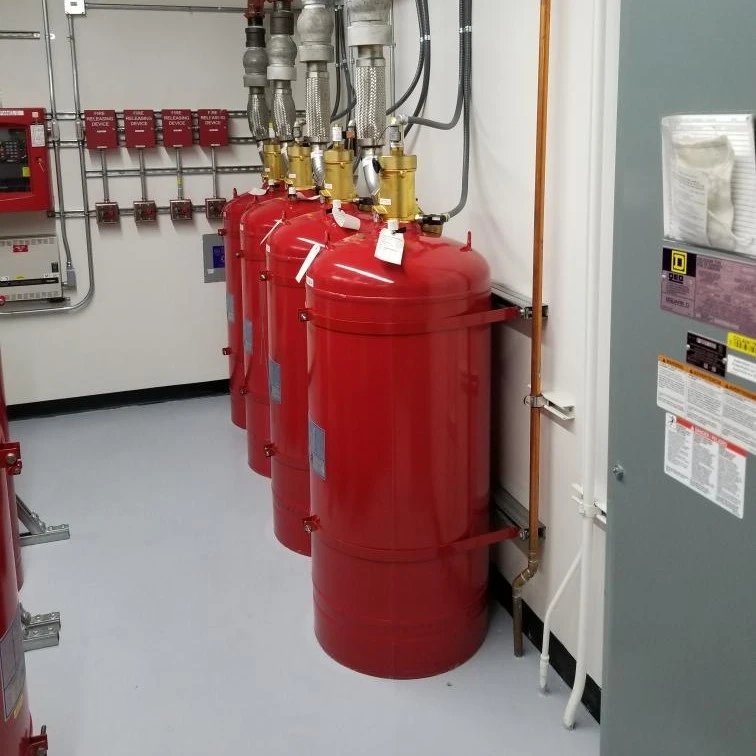
Inergen Fire Suppression System
Unlike FM-200 and Novec 1230, Inergen displaces oxygen to suppress fire. However, Inergen remains safe for humans, as it only lowers the level of oxygen to suppress fire while remaining breathable. In fact, the unique blending of gasses actually enhances the body’s ability to assimilate oxygen. Not to mention, Inergen is much more environmentally friendly than FM-200, making it a popular replacement.
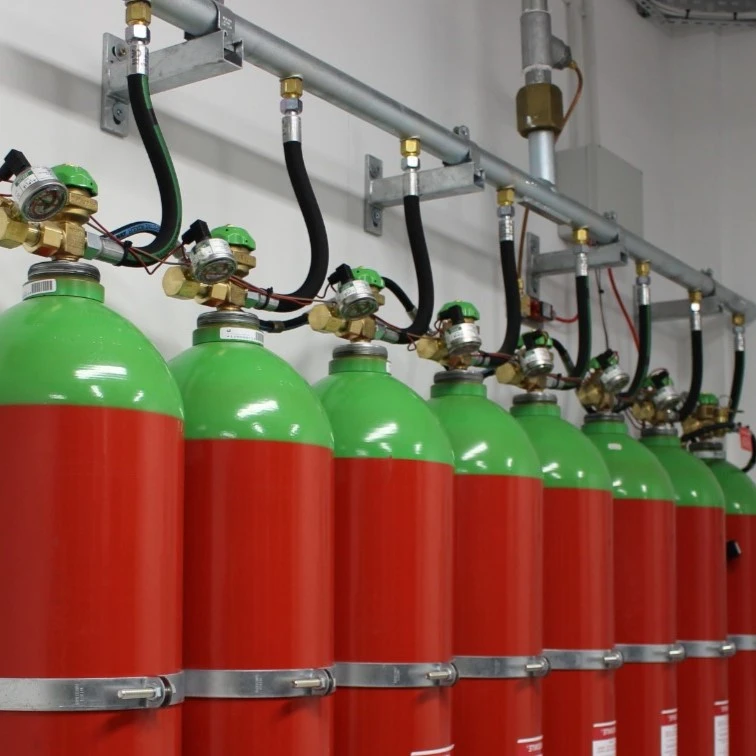
Halon Fire Suppression System
Halon 1301 succeeded so well because it could be used in data centers, IT rooms, museums, libraries, surgical suites, and other locations where use of water-based suppressants could irreparably damage electronics or vital archival collections. But…
Halon products have been discontinued due to their ozone-depleting properties. Although these fire suppression systems have not been banned, they have been phased out since 1994.
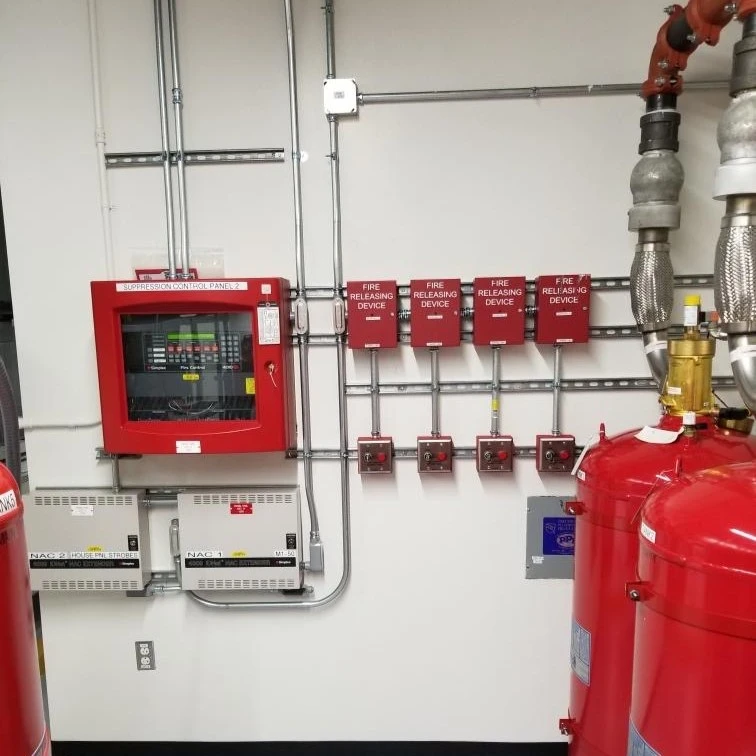
CO2 Fire Suppression System
CO2 is similar to Inergen in that they both displace oxygen to suppress fires. However, CO2 is toxic to humans, so it is primarily used in locations with few or no occupants. CO2 fire suppression systems are divided into two categories: low-pressure CO2 and high-pressure CO2. Low-pressure CO2 tanks are much larger than high-pressure tanks, but they take longer to discharge. High-pressure CO2 tanks discharge much more quickly but exhaust completely after one use. Low-pressure CO2 tanks, on the other hand, can hold multiple dischargers.
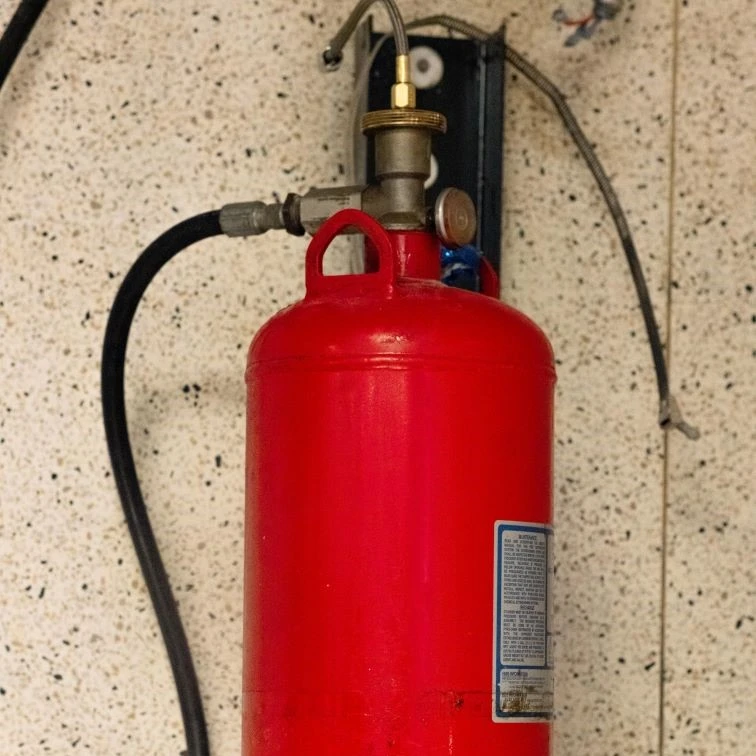
Our team of expert technicians will service your new or existing fire suppression system from start to finish, ensuring full commitment to your fire protection needs. Industry-leading care throughout is guaranteed. We’re with you every step of the way.
Industry-leading care throughout the process is guaranteed. We’re with you every step of the way.
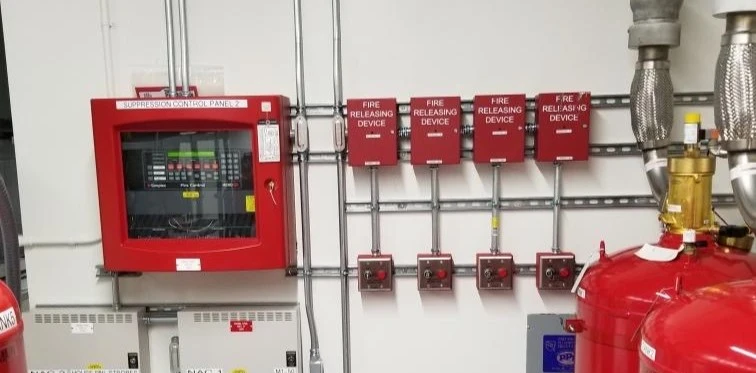
Clean Agent Suppression System Installation & Servicing
After providing a full site survey with detailed blueprints to fully understand your specific fire protection requirements.
From there, our expert technicians will begin the fire suppression system installation process, ensuring attention to detail and regulatory compliance at every stage.
What is a clean agent fire suppression system?
Clean agent fire suppression systems are chemical extinguishing systems that use gasses rather than water. In the event of a fire, these gasses flood an enclosure to suppress the flames. Clean agent fire suppression systems work by either lowering the temperature or displacing oxygen. Both methods are effective in fighting Class A, B, and C fires.
Clean Agent Fire Suppression Systems FAQs
What is the difference between clean agent fire suppression and water mist fire suppression?
Clean agent fire suppression uses a mixture of chemicals to suppress fires with gas rather than liquid. This helps better protect high-value assets that might otherwise be damaged by water.
Is FM-200 Fire Suppression banned?
No. FM-200 is not being banned. However, the process of phasing down FM-200 has been ongoing since 2022. To comply with environmental safety regulations, the goal is to reduce FM-200 by 85% worldwide by 2037. Though, there’s a few notable exceptions where certain countries have created barriers limiting the ability to sell FM-200
What is the difference between FM-200 and Inergen?
Inergen is much more environmentally friendly than FM-200. Additionally, the two approach fire suppression differently. FM-200 absorbs heat to suppress fires, while Inergen displaces oxygen. Again, due to environmental concerns, FM-200 is being phased down, with the goal of reducing the suppressant by 85% by 2037.
Can I perform repairs on a clean agent fire suppression system myself?
No, you should not try to repair a clean agent fire suppression system yourself. It needs special skills and knowledge to fix it correctly. Most places need a certified technician for repairs, and DIY work could also void the warranty. It’s best to call a professional to make sure everything is done right and safely.
Fluoro-K in Fire Protection
Fluoro-K is a waterless fire suppression system that leaves behind no residue and is not electrically conductive. The Fluoro-K agent is a colorless gas with low odor designed to suppress fires in situations where water could cause damage. Unlike FM-200, it is considered to be an environmentally friendly clean agent with no ozone depletion potential.
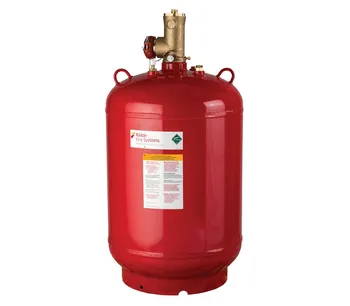

Lets talk now?
From FM-200 Fire Suppression Systems to regular CO2 Fire Suppression Systems. We do it all. Give us a a call or send an email our way. Clean agent systems are
